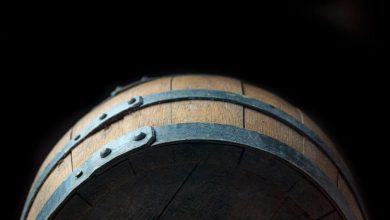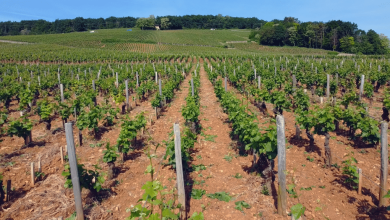German Icewine its global development and its possible demise
The sweet wine category is a treasure trove of incredibly complex, mouth-watering, and inviting wines. Naturally sweet wines, or Residual Sugar (RS), derive their sweetness from the grapes. Various methods are employed to achieve these results, with one of the most fascinating being the production of Ice Wine or Eiswein for German speakers.
This intricate process involves harvesting grapes that have frozen on the vine, resulting in a concentrated and flavorful wine known for its exquisite sweetness and complexity.
Step by steps process:
In a process known as “Winter Harvest,” grapes are left on the vine until late winter, waiting for extended freezing temperatures, sometimes as late as January of the following year.
According to German law, the grapes must freeze on the vine. Artificial freezing, such as that practised in New Zealand, is strictly prohibited. The grapes must be harvested at -7°C (19°F) or colder temperatures. A significant labour force must be available on short notice for the early morning hours of the first day they freeze.
In this condition, the water in the grape pulp turns to ice. The frozen grapes are picked, usually at night and by hand, and gently pressed to extract juice with a heightened sugar concentration as the water remains in ice.
The extracted juice before fermentation is highly concentrated in sugars and flavours. During the fermentation, yeasts can only convert a portion of the sugars into alcohol. In an environment where sugars are too high, yeasts become sluggish and die.
Further informations can be found here; https://www.oiv.int/standards/international-code-of-oenological-practices/part-i-definitions/special-wines/icewine-eiswein
Did you know that if the grapes used to make Ice Wine are harvested after December of the harvest year but into the following year, the label still carries the year in which the grape was growing? This means that grapes grown in 2024 and harvested in January 2025 will still show 2024 as the year.

Historical Origin and Global Spread:
The method originated in 1794 when German winemakers pressed frozen grapes during a freezing winter, resulting in the first Eiswein.
Ice wine production came to Canada in the 1980s, becoming a treasure in Ontario, particularly on the Niagara Peninsula.
While Germany and Canada are the leading producers, ice wine is now made worldwide, including in Australia, Austria, Denmark, New York, and other regions.
Varieties and Experimentation:
Typical grape varieties for Ice wines are late-ripening varieties such as Riesling, Vidal, Gewurztraminer, Sylvaner, and occasionally Cabernet Franc. This ensures that the grapes are healthy well into the winter months.
Experimental varieties: Winemakers worldwide experiment with varieties like Chenin Blanc, Chardonnay, Pinot Blanc, Pinot Noir, and Merlot for ice wine production.

What are the challenges faced in producing ice vines?
Disease and Pests: grapes not picked from the vine may be susceptible to infection or damage from pests. Netting is often used to protect against birds.
Freeze-thaw cycles are essential for the typical character of ice wine and can only occur in specific climates.
Climate change is posing challenges to the global production of Ice wine. The conditions for producing ice wine are met in fewer years, particularly during traditional years. As a result, new areas for growing vines are being explored to make ice wine. For example, a new vineyard in China has been explicitly planted to produce ice wine. If you want to learn more about climate change and its impact on ice wine, you can read this article from Decanter
What should Ice Wine taste like?
Ice wine boasts a beautifully intense sweetness and concentrated flavours. The grape variety used in its production influences the specific flavour characteristics of ice wine. Generally, ice wine is celebrated for its incredibly intense fruit notes, balanced by a refreshing acidity and a luscious sweetness that is truly unique to this style of wine.
Riesling ice wines, for example, are renowned for their delightful flavors of juicy peach, succulent apricot, and hints of honey, creating a rich and aromatic experience for the palate.
Egon Muller from Mosel is a prime example of global ice wine production. Renowned for being one of the finest producers of white wine globally, Muller’s prime site, Scharzhofberger, holds a distinctive position. This unique vineyard, characterised by a deep slate facing the south, is nestled around 300 meters from the river. Within this setting, the famed Ice Wine is created, albeit in rare vintages and from very low yields.
Check out the producer page on our website

Are you looking for the most wough-after gems in the wine world?
Discover the world’s finest wines with Crurated’s exclusive membership. Access rare allocations, secure storage, and personalized wine concierge services. Join today the elite club of discerning wine enthusiasts.




